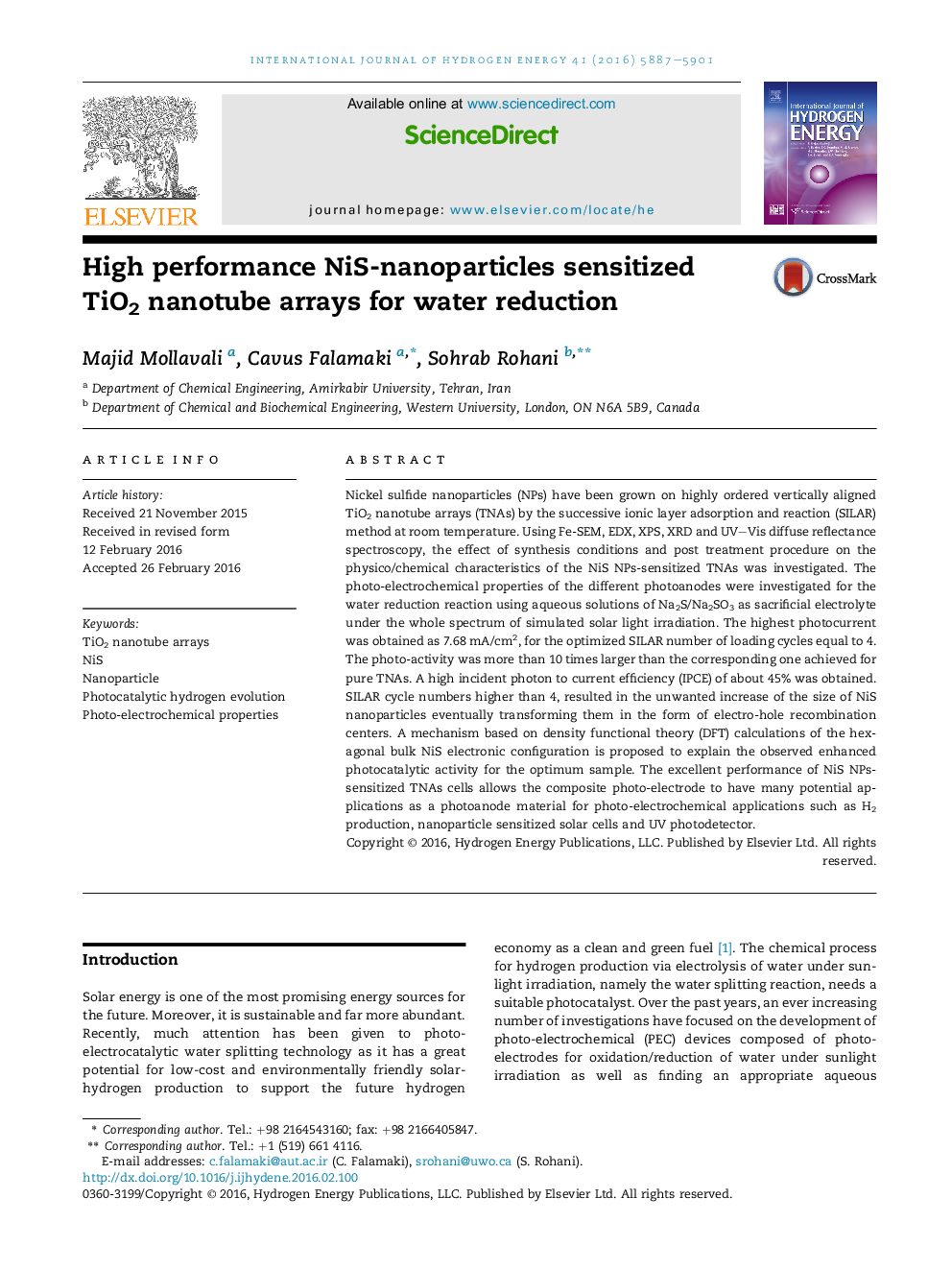| Article ID | Journal | Published Year | Pages | File Type |
|---|---|---|---|---|
| 1273592 | International Journal of Hydrogen Energy | 2016 | 15 Pages |
•NiS nanoparticles have been grown on ordered vertically aligned TiO2 nanotube arrays.•Water reduction by simulated solar light and Na2S/Na2SO3 electrolyte was studied.•Optimum SILAR cycle number was obtained as 4.•The optimum sample exhibits an IPCE of 45%.•The enhanced photocatalytic activity is explained based on DFT calculations.
Nickel sulfide nanoparticles (NPs) have been grown on highly ordered vertically aligned TiO2 nanotube arrays (TNAs) by the successive ionic layer adsorption and reaction (SILAR) method at room temperature. Using Fe-SEM, EDX, XPS, XRD and UV–Vis diffuse reflectance spectroscopy, the effect of synthesis conditions and post treatment procedure on the physico/chemical characteristics of the NiS NPs-sensitized TNAs was investigated. The photo-electrochemical properties of the different photoanodes were investigated for the water reduction reaction using aqueous solutions of Na2S/Na2SO3 as sacrificial electrolyte under the whole spectrum of simulated solar light irradiation. The highest photocurrent was obtained as 7.68 mA/cm2, for the optimized SILAR number of loading cycles equal to 4. The photo-activity was more than 10 times larger than the corresponding one achieved for pure TNAs. A high incident photon to current efficiency (IPCE) of about 45% was obtained. SILAR cycle numbers higher than 4, resulted in the unwanted increase of the size of NiS nanoparticles eventually transforming them in the form of electro-hole recombination centers. A mechanism based on density functional theory (DFT) calculations of the hexagonal bulk NiS electronic configuration is proposed to explain the observed enhanced photocatalytic activity for the optimum sample. The excellent performance of NiS NPs-sensitized TNAs cells allows the composite photo-electrode to have many potential applications as a photoanode material for photo-electrochemical applications such as H2 production, nanoparticle sensitized solar cells and UV photodetector.
Graphical abstractSchematic illustration of proposed mechanism for photo-electrocatalytic hydrogen evolution over NiS-n/TiO2 nanocomposites in the presence of Na2S/Na2SO3 aqueous solution as a sacrificial electrolyte under simulated solar light irradiation.Figure optionsDownload full-size imageDownload as PowerPoint slide
